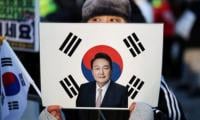Learning from China model
Prime Minister Shehbaz Sharif has expressed his desire to learn from Chinese economic and governance model. He considers it would help implement CPEC projects. He is neither first nor the last. It has become fashion among the political/ruling elite to talk about China model.
Analysis of prevailing situation highlights there is limited understanding of Chinese model among political elite of Pakistan. Thus, it is necessary to understand first and then decide whether we want to implement it or not.
Before discussing the model, we need to understand Chinese model has certain characteristics which make it different from liberal democracy and even from traditional communism. China practices Whole Process Democracy which ensures inclusiveness in policy formulation and implementation. It is designed to achieve goal of people-centric development according to their will.
Formulation of Five-Year Plan and its implementation is best example of this philosophy. The plan process starts 2-3 years before its finalisation. State seeks inputs from a wide range of stakeholders including people, districts, provincial and national governments and Communist Party of China (CPC). Then, draft plan is being shared with National Congress, politburo and stand committee of politburo, think tanks and netizens. Before finalising the plan, it is shared with other political parties.
Second, China has adopted scientific approach for decision-making. Political leadership and experts come up with scientific argument. On the basis of scientific data, they develop different options. Best available option is selected.
Third, China does not hire consultants, donors or tourist experts to develop policies or plans. They engage local wisdom and competent CPC leadership to lead the process. It is pertinent to mention here, CPC has rich pools of professionals (53.3%) with diverse expertise.
Fourth, CPC, which spearheads everything, is a merit and value-based party. There is no space for hereditary leadership. Everyone has to go through the process. The party members have to earn the leadership, no shortcut.
However, once decision is made, it is implemented with without “ifs or buts”. Government and CPC work hand in hand. They also act as monitoring bodies for each other. Bureaucracy or any other institution cannot create any hurdle or delay.
The process discussed above can be understood by studying Shenzhen Special Economic Zone (SSEZ). CPC and the government took the decision after deliberation and tasked relevant departments, governments (central, provincial, local) and party cadres to meet the targets.
This strategy led to successful execution of plans, and now Shenzhen is one of the most successful SEZ in the world. On the contrary, the decision-making, and implementation processes in Pakistan are highly exclusive. Political parties put all their efforts to paralyse local government system, a representative of people.
Only a small number of think tanks or NGOs are consulted in the name of inclusiveness. On the implementation side, bureaucracy knows everything. So, in the whole process, the real stakeholders – the people and local governments – are missing.
Second, Pakistan hires donor-driven consultants or tourist experts or victim of post-retirement enlightenment disease to develop policies. Tourism experts are an interesting category. These Pakistanis work abroad and only visit country to see their families and get some work to sponsor their trip.
They have limited or outdated knowledge of society. Moreover, international donors, foreign consultants and tourist experts do not have much time or interest to consult people at the local level. They use these organisations as proxy. Their only goal is to make donors happy. So, they devise policies which have limited relevance for Pakistan.
Third, political parties have very few professionals in their ranks, except Jamaat-e-Islami (JI) and PTI. In the beginning, PTI tried to adopt professionals and established groups for intellectual input. But, after coming to power, they divorced the strategy and started introducing cronies or vested interest groups. Though JI has professionals, but it severely lacks political skills.
Unfortunately, Pakistan ruling parties are dependent on the wisdom of their leadership. Leaders are considered superhuman who knows everything. These leaders only consult their cronies or listen to donors or journalists. There is limited or no space for professionals or scientific decision-making.
Fourth, donors also try to directly fund certain initiatives of parliament. It is feared it will compromise decision-making independence and space for indigenous wisdom. On the basis of above discussion, we can conclude the political system of Pakistan does not allow us to copy Chinese model at all.
In this context, Pakistan will have to adopt a stepwise strategy if it wants to learn from China. First, induct professionals with good understanding of China model in political parties and government positions. Second, political parties will have to reform themselves and get rid of mentality of superhuman leadership.
They should focus on the process of grooming leadership. Third, for adopting Chinese model, re-orient political and institutional systems.
In conclusion, Pakistan can start process by introducing these reforms for implementation of CPEC. It will help Pakistan devise right set of instruments for engagement with China and to bring Chinese investment. It will also lay down foundation for better understanding of China, especially China in New Era, and its relevance for Pakistan. Lasty, without making reforms discussed above, desire to learn or benefit from the Chinese model is only rhetoric.
-
 North West Raps About Piercings, Tattoos And Skipping School In New Song
North West Raps About Piercings, Tattoos And Skipping School In New Song -
 Teddi Mellencamp Shares Hopeful Health Update Amid Cancer Battle: 'Cloud Is Lifting'
Teddi Mellencamp Shares Hopeful Health Update Amid Cancer Battle: 'Cloud Is Lifting' -
 Prince William Makes Clear The Conditions He Has For Meeting Prince Harry
Prince William Makes Clear The Conditions He Has For Meeting Prince Harry -
 Sara Foster Slams Age Gap Relationship After 'blah' George Clooney Date
Sara Foster Slams Age Gap Relationship After 'blah' George Clooney Date -
 Jennifer Garner Recalls Enduring Ben Affleck’s Intense Beyoncé ‘Halo’ Phase
Jennifer Garner Recalls Enduring Ben Affleck’s Intense Beyoncé ‘Halo’ Phase -
 Prince Harry’s Mental Health Ends Up At Stake As Meghan Moves Him To 'second Fiddle'
Prince Harry’s Mental Health Ends Up At Stake As Meghan Moves Him To 'second Fiddle' -
 Bradley Cooper On Who His Mother Thinks Is The World’s Best Actor
Bradley Cooper On Who His Mother Thinks Is The World’s Best Actor -
 Meghan Markle Offers Glimpse Into Intimate Dance Moment With Harry Amid Split Rumors
Meghan Markle Offers Glimpse Into Intimate Dance Moment With Harry Amid Split Rumors -
 Jon Bon Jovi Joins The Viral 2016 Throwback Trend With Nostalgic Photos
Jon Bon Jovi Joins The Viral 2016 Throwback Trend With Nostalgic Photos -
 Kate Middleton Hailed For Her Lack Of ‘obligation’ As Well As Altruistic, Selfless Qualities
Kate Middleton Hailed For Her Lack Of ‘obligation’ As Well As Altruistic, Selfless Qualities -
 Jason Momoa Says Being With Beau Adria Arjona Feels 'perfect'
Jason Momoa Says Being With Beau Adria Arjona Feels 'perfect' -
 Idris Elba Says One Mix-up Nearly Cost Him A Knighthood From King Charles
Idris Elba Says One Mix-up Nearly Cost Him A Knighthood From King Charles -
 Andrew Mountbatten Windsor Incurs Anger Of Biggest Royal
Andrew Mountbatten Windsor Incurs Anger Of Biggest Royal -
 Megan Fox, Machine Gun Kelly's Relationship 'is Just About Co-parenting'
Megan Fox, Machine Gun Kelly's Relationship 'is Just About Co-parenting' -
 Prince Harry, Meghan Markle Warned They Can’t Fool Brits Because It Won’t Land
Prince Harry, Meghan Markle Warned They Can’t Fool Brits Because It Won’t Land -
 South Korea’s Ex-president Yoon Suk Yeol, Sentenced To 5 Years In Prison: Key Details Explained
South Korea’s Ex-president Yoon Suk Yeol, Sentenced To 5 Years In Prison: Key Details Explained



